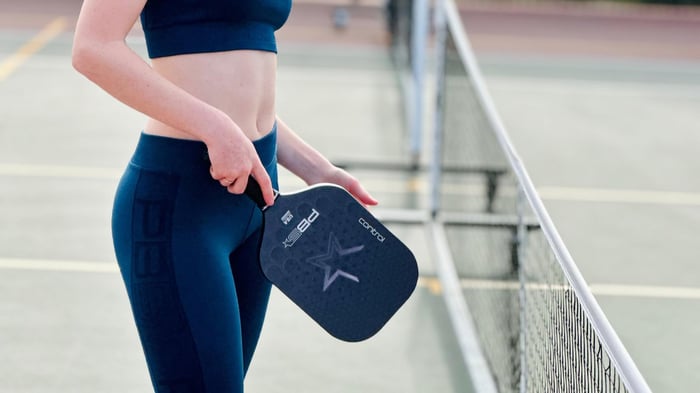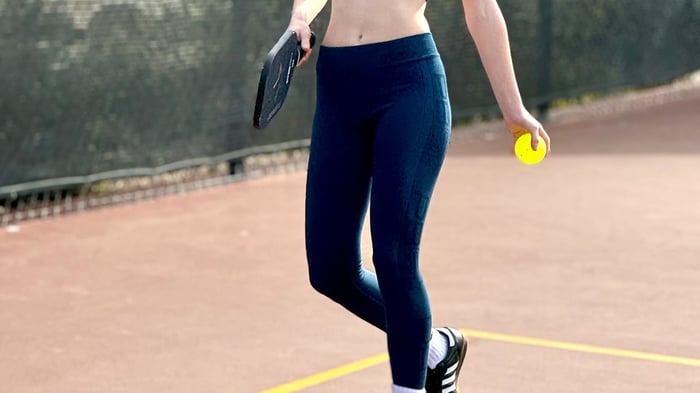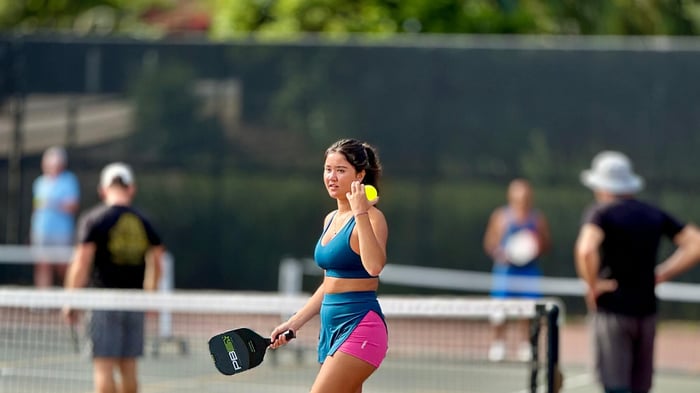Key takeaways:
Strength training may reduce injury risk, improve agility, and support consistent performance throughout a match.
Planks, dumbbell rows, squats, lateral lunges, and medicine ball slams each build targeted areas of strength to boost court readiness.
Group workouts enhance consistency, improve form through shared feedback, and increase motivation.
Pickleball is a fast-paced sport that demands quick reflexes, strong footwork, and total-body control. To keep up with the game—and enjoy it longer—strength training can be a serious game-changer. It helps players react faster, move with more stability, and maintain energy through long rallies and quick transitions.
The five exercises below are designed to support the quick movement, balance, and control needed in pickleball. Combined with PB5star performance gear, this routine helps players stay match-ready.
Why strength training is a game-changer for pickleball enthusiasts
Pickleball is an intense, full-body sport that challenges your strength, balance, and reflexes with every point. From quick turns to powerful overheads, every movement counts—and that's where strength training steps in. It targets the key muscles involved in these actions, helping players stay grounded, absorb impact, and recover faster between plays.
And let’s face it, working out is way more fun with company. Training with a partner or group keeps you motivated, pushes your limits, and brings energy to your routine, turning fitness into a shared experience rather than a solo grind.
So, let's take a look at the five strength exercises every pickleball player should try:
Exercise 1: Plank for core stability
Planks are a powerhouse move for your core—and your game. They strengthen the muscles that help you stay balanced while running, lunging, or shifting positions mid-rally. A strong core also improves control over your shots and reduces strain on your back and legs, especially during quick transitions or long matches. Here’s how to do them right:
Place your forearms on the ground with elbows directly under your shoulders.
Form a straight line from your head to your heels.
Engage your core and hold for 20 seconds, gradually increasing to 60 seconds.
For a challenge, try shoulder taps while holding the plank to activate additional muscle groups.
Exercise 2: Dumbbell rows for arm strength
After engaging your core with planks, it’s time to focus on your upper body. Dumbbell rows strengthen the upper back, shoulders, and arms—muscles that give your serve power and help you stay in control during quick volleys.
Use light weights (5–10 lbs for beginners), three sets of 12–15 reps
Brace on a bench with one hand and knee down, pull the dumbbell toward the torso
Switch sides and repeat
Move with control to build strength safely and effectively.
Exercise 3: Squats for lower body power
With your upper body warmed up, it’s time to build a strong foundation from the ground up. Squats are one of the best lower-body moves for developing strength in your legs and hips, crucial muscles that power your ability to sprint, lunge, and maintain a steady stance during games. They also support balance and mobility, helping you recover quickly between points and stay in position no matter where the ball goes.
Stand with your feet shoulder-width apart.
Bend your knees and hips as if you’re sitting into a chair.
Lower your body while keeping your chest lifted and back straight.
Make sure your knees stay aligned with your toes.
Push through your heels to return to a standing position.
Practice regularly to build stronger, more responsive legs for quick movement and balance.
Exercise 4: Lateral lunges for agility
Next up, let’s work on your agility and side-to-side control. Lateral lunges are a go-to move for improving how quickly and smoothly your legs and hips respond to directional changes on the court. They help you stay low, balanced, and ready to reach those tough, wide shots with control and confidence.
Step wide, bend one knee while keeping the other leg extended
Push back to center and alternate sides
Start with 8–10 reps per side, adding weight or speed over time
This move builds coordination and prevents overstretch injuries.
Exercise 5: Medicine ball slams for explosive power
To round out your strength routine, let’s shift the focus to explosive power. Medicine ball slams mimic the full-body energy and force you use for overhead shots and fast put-aways, training your body to respond with speed and intensity when the match heats up.
Stand with feet steady, raise the ball overhead
Slam it to the ground with force
Begin with 6–8 reps and increase as strength builds
This full-body move trains power and endurance at once.
Frequently asked questions about strength training for pickleball
How does strength training boost my pickleball performance?
It improves movement control, supports quicker reactions, and lowers the risk of injury during intense matches. Strengthening the body helps players stay consistent through long games.
How often should I work these exercises into my routine?
Twice a week is a great starting point for most players. This frequency helps build strength without overworking your muscles. Just be sure to give your body enough time to rest and bounce back between sessions.
Are these exercises beginner-friendly?
Yes. Each one can be modified for different fitness levels. Focus on good form first, then gradually increase reps or resistance.
What gear do I need to get moving?
You’ll need a mat, a pair of dumbbells, and a medicine ball. PB5star’s performance gear adds comfort and confidence to every session.
How can I make strength training more fun and social?
Training with friends adds energy and makes it easier to stay consistent. Partner drills, group warmups, or post-game circuits are all great ways to build strength together.
Take your pickleball game to new heights
Together, these five exercises cover the core areas needed to compete with confidence, improving balance, reaction time, and on-court strength. By focusing on total-body conditioning, players can move with more control, recover faster, and protect themselves from common injuries. Off-court training isn’t just extra effort—it’s one of the best ways to support a longer, more enjoyable pickleball experience.
Ready to feel stronger, move smoother, and show up confident for every game? Check out PB5star for gear made to support every move—on and off the court.







